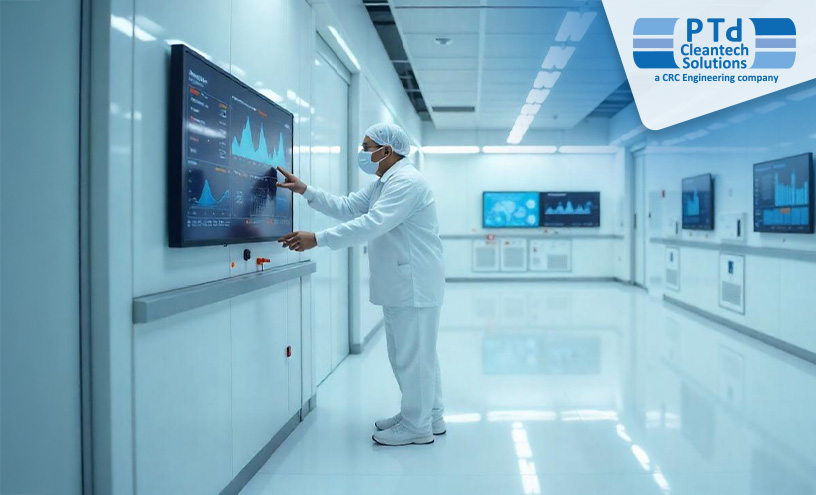Cleanrooms have been the priority in industries where precision and contamination control are paramount. From pharma and biotech to aerospace and semiconductors, the need for intelligent, more efficient cleanroom operations is increasingly rising. The use of IoT (Internet of Things) and Building Management Systems (BMS) is transforming how the varieties of environments are monitored and controlled. These technologies are facilitating more effective decision-making and lower operational expenses with tight regulatory requirements. For those plants grappling with the issues of high-tech manufacturing environments, having a skilled semiconductor facility consultant on their side has emerged as a strategic necessity.
The Role of IoT in Cleanroom Intelligence
The addition of IoT devices to cleanroom spaces has made real-time monitoring and dynamic control a reality. IoT-based systems enable continuous monitoring of key parameters like temperature, humidity, air pressure, particulate count, etc. The data is made available in real-time through cloud-based dashboards, thus allowing facility managers to respond quickly to any variation from normal operating conditions.
Cleanrooms no longer remain static environments when IoT is implemented into them. Rather, they become dynamic systems with the potential to self-regulate and send alerts. For instance, when a temperature surge is detected within a sensitive area, the system will automatically alert maintenance staff and even initiate adjustments with built-in HVAC controls. Such quick response eliminates the risk of contamination or integrity-compromised products. A consultant for a semiconductor facility can give insight into the choice and integration of IoT systems suited to the respective industry requirements for smooth adoption with the current infrastructure.
Smart Sensors: Precision at Every Level
Sensors form the backbone of any intelligent cleanroom system. Their ability to capture real-time data at micro levels is critical for maintaining the stringent environmental conditions required in cleanrooms. Modern sensors are far more sophisticated than their predecessors, capable of not only measuring physical conditions but also transmitting that data wirelessly for analysis and automation.
For instance, particle counters now offer live feedback on particulate levels, while occupancy sensors can detect movement and adjust airflow accordingly to conserve energy. Additionally, pressure differential sensors help maintain directional airflow between rooms, reducing the risk of cross-contamination. These sensors, when integrated properly, contribute to a closed-loop system where data feeds into controls that optimise operations without manual intervention.
Choosing the right types and configurations of sensors is not a one-size-fits-all process. Each cleanroom has unique requirements depending on its classification, usage, and layout. A semiconductor facility consultant brings in-depth expertise in evaluating these parameters and recommending sensor setups that enhance efficiency and regulatory compliance.
Building Management Systems: The Brain Behind the Operation
While IoT devices and sensors provide the eyes and ears of a smart cleanroom, the Building Management System acts as the brain. BMS platforms unify data from all connected devices and provide centralised control over the cleanroom’s environment. These systems can automate routine tasks, trigger alerts, and provide predictive maintenance suggestions based on data analytics.
The integration of BMS allows for a holistic view of the facility’s performance. Operators can track energy usage, identify inefficiencies, and maintain optimal conditions with minimal manual oversight. By storing historical data, BMS also supports audits and documentation required by regulatory authorities, making compliance easier and more transparent.
A well-implemented BMS does more than just streamline control—it enables strategic planning and scalability. As industries grow and demands increase, the ability to adapt cleanroom operations becomes crucial. A semiconductor facility consultant plays a key role in designing and implementing BMS frameworks that are scalable, secure, and aligned with long-term business goals.
The integration of IoT, advanced sensors, and BMS is transforming traditional cleanrooms into smart, adaptive environments that can meet the evolving demands of high-precision industries. These technologies enhance monitoring, improve energy efficiency, and reduce the margin for human error. However, to fully realise the potential of smart cleanrooms, it is essential to have expert guidance. Engaging a semiconductor facility consultant ensures that every aspect of the cleanroom ecosystem is optimised for performance, compliance, and future-readiness. Whether building a new facility or upgrading an existing one, smart control is not just an advantage; it is becoming the industry standard.

